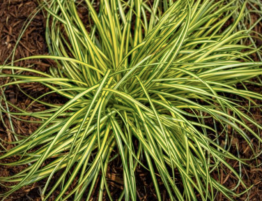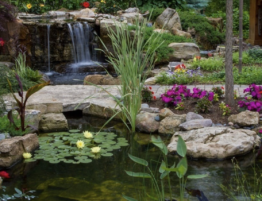
Spring Pond Cleaning Checklist for a Healthy Water Feature
Is your pond ready for spring? As the weather warms, it’s crucial to prepare your water feature for the season ahead. This spring pond cleaning checklist will guide you through essential tasks to ensure a healthy, vibrant ecosystem. We’ll cover assessing your pond, removing debris, maintaining equipment, and treating water conditions. By following these steps, you’ll create an optimal environment for fish and plants, preventing common issues like algae overgrowth and poor water quality. Let’s dive into the key steps for a successful spring pond cleaning.
Spring Pond Cleaning Checklist for a Healthy Water Feature

Spring pond cleaning is essential for maintaining a healthy water garden. Pond owners should begin by inspecting their water features for any signs of damage or leaks. This includes checking the fountain, pump, and filtration system for proper functioning.
Using a garden hose, carefully remove debris and sediment from the pond bottom. It’s crucial to clean filters and skimmers, ensuring optimal water flow. Owners should also trim back any overgrown aquatic plants to promote balanced horticulture within the ecosystem.
Water quality testing is a vital step in spring maintenance. Pond enthusiasts should check pH levels, ammonia, and nitrate concentrations to ensure a healthy environment for fish and plants. If necessary, they should add beneficial bacteria to jumpstart the biological filtration process.
Finally, refilling the pond with fresh water and restarting the fountain will complete the spring cleaning process. Regular maintenance throughout the season will help keep the water garden thriving and beautiful, providing a serene focal point for any outdoor space.
Assess Your Pond Before Cleaning

Before beginning spring pond cleaning, a thorough assessment is crucial. Pond owners should evaluate water clarity and quality, identify plant growth and debris accumulation, and check fish health and habitat conditions. This evaluation helps determine necessary cleaning tasks and potential water feature repairs. Understanding the pond’s current state, including oxygen levels and the nitrogen cycle, ensures effective maintenance for koi and other aquatic life.
Evaluate Water Clarity and Quality
Assessing water clarity and quality is a critical first step in spring pond cleaning. Pond owners should examine the water for signs of cloudiness, algae growth, or excessive debris. Testing for key parameters such as chlorine, nitrite levels, and pH balance provides insights into the pond’s overall health and helps identify potential issues affecting aquatic plants and fish.
A comprehensive evaluation of water quality involves more than visual inspection. Pond enthusiasts should use test kits to measure ammonia, nitrate, and dissolved oxygen levels in their tanks. These factors directly impact the well-being of aquatic life and influence the breakdown of organic matter. Regular monitoring and adjustment of these parameters ensure a thriving ecosystem for both flora and fauna. Here’s a checklist for evaluating water clarity and quality:
- Check water clarity visually
- Test pH levels
- Measure chlorine and nitrite concentrations
- Assess ammonia and nitrate levels
- Monitor dissolved oxygen content
- Evaluate water temperature
Identify Plant Growth and Debris Accumulation
Identifying plant growth and debris accumulation is crucial for maintaining a healthy pond ecosystem. Pond owners should assess the condition of aquatic plants, noting any overgrowth or invasive species that may disrupt the garden’s balance. They should also examine the pond’s surface and bottom for fallen leaves, twigs, and other organic matter that can decompose and affect water quality.
The inspection process extends to the pond’s waterfall and surrounding areas, where debris often collects due to wind and water movement. Evaluating the extent of plant growth and debris accumulation helps determine the level of cleaning required and identifies potential issues that may affect water circulation or increase evaporation. A thorough assessment ensures an effective cleaning strategy:
- Check for overgrown aquatic plants
- Identify any invasive plant species
- Assess debris on the pond surface
- Examine the pond bottom for accumulated organic matter
- Inspect the waterfall and surrounding areas for debris buildup
- Evaluate the impact on water circulation and evaporation
Check for Fish Health and Habitat Conditions
Assessing fish health and habitat conditions is crucial for maintaining a thriving fish pond ecosystem. Pond owners should observe their fish for signs of disease, unusual behavior, or physical abnormalities. They should also check water parameters, including ammonia levels, which can be harmful to fish if elevated.
The habitat should support fish health by providing adequate oxygenation and appropriate water temperature. Owners need to evaluate algae growth, as excessive algae can deplete oxygen levels and impact fish well-being. Proper water treatment and regular monitoring are essential for creating an optimal environment for fish. Key aspects to check include:
- Fish behavior and appearance
- Water quality parameters
- Oxygen levels and circulation
- Algae growth and control
- Presence of adequate hiding spots and shade
- Filtration system efficiency
Gather Supplies for Cleaning Tasks
Gathering the necessary supplies is essential for effective spring pond cleaning. Pond owners should collect tools such as a pond vacuum, skimmer nets, and water testing kits to maintain their koi ponds and fountains. These items help remove debris, manage water quality, and ensure a healthy nitrogen cycle in the aquatic landscape.
Fish keepers should also prepare water treatments, beneficial bacteria, and algae control products to address common pond issues. Having the right supplies on hand allows for efficient cleaning and maintenance, promoting a thriving ecosystem for fish and plants in the water feature.
Remove Debris and Organic Matter

Removing debris and organic matter is crucial for maintaining a healthy pond ecosystem. This process involves skimming surface debris, cleaning the pond bottom, trimming aquatic plants, and responsibly disposing of waste. Proper filtration and vacuuming techniques help maintain water quality and clarity. For expert assistance with pond maintenance, contact us to ensure your water feature remains a beautiful focal point in your lawn.
Skim Surface Debris and Leaves
Skimming surface debris and leaves is a crucial step in maintaining a healthy pond ecosystem. Pond owners should use a fine-mesh net to remove floating organic matter, such as fallen leaves and twigs, which can decompose and affect water quality. This process prevents excess nutrients from entering the pond, reducing the risk of algae blooms and maintaining a balanced environment for wildlife throughout the summer.
Regular skimming helps prevent debris from sinking to the bottom and contributing to soil buildup. By removing surface waste, pond enthusiasts ensure proper ultraviolet light penetration, which is essential for aquatic plant growth and natural algae control. Efficient debris removal also reduces the workload on filtration systems, promoting better water circulation and oxygenation:
| Skimming Benefits | Impact on Pond Health |
|---|---|
| Removes organic matter | Prevents nutrient buildup |
| Improves water clarity | Enhances UV light penetration |
| Reduces filter strain | Promotes better circulation |
Clean the Pond Bottom and Remove Sediment
Cleaning the pond bottom and removing sediment is a crucial step in spring maintenance. Pond owners should use a pond vacuum or siphon to carefully remove accumulated debris and organic matter from the bottom, paying attention to areas with gravel. This process helps maintain proper water chemistry and pH levels, preventing the buildup of harmful substances that can affect fish health.
For thorough cleaning, some pond enthusiasts may choose to partially drain their water feature. This allows for easier access to the bottom and facilitates more effective sediment removal. After cleaning, owners should refill the pond with fresh water and perform necessary water treatments. Regular maintenance of the pond bottom ensures optimal drainage and water quality throughout the season. For professional assistance, pond owners can contact a specialist using the provided email address.
Trim Dead or Overgrown Aquatic Plants
Trimming dead or overgrown aquatic plants is essential for maintaining a healthy pond ecosystem. Pond owners should use pruning shears to remove yellowing or decaying foliage, which can compromise water quality and affect goldfish health. This process also promotes proper aeration by preventing excessive plant growth from obstructing water flow.
After trimming, gardeners should collect plant debris in a bucket to prevent it from sinking and decomposing in the pond. They can use a hose to rinse any remaining plant matter from the aquarium walls, ensuring a clean environment for aquatic life. Regular maintenance of aquatic plants helps balance the ecosystem and enhances the visual appeal of the water feature.
Dispose of Waste Responsibly
Responsible waste disposal is crucial for maintaining water quality in ponds and swimming pools. Pond owners should separate organic debris from non-biodegradable materials, composting plant matter and disposing of other waste in appropriate receptacles. This practice prevents harmful substances from re-entering the water through runoff, ensuring the effectiveness of filtration solutions.
Proper disposal extends to water removed during cleaning. Pond enthusiasts should avoid draining chlorinated or chemically treated water directly onto lawns or into storm drains. Instead, they should use this water for irrigation after allowing it to sit for 48 hours, neutralizing harmful chemicals. For professional waste management services related to pond and spillway maintenance, owners can consult local experts:
- Separate organic and non-biodegradable waste
- Compost plant matter when possible
- Use appropriate disposal methods for non-organic debris
- Allow treated water to neutralize before reuse
- Consult professionals for proper waste management
Clean and Maintain Equipment

Proper equipment maintenance is crucial for a healthy pond. This section of the spring cleaning checklist covers rinsing filters, inspecting pumps and fountains, testing water features, and preparing equipment for seasonal use. clarity ponds emphasizes the importance of clean filters, debris-free pumps, and properly functioning lighting to ensure optimal water clarity and feature performance throughout the season.
Rinse and Clean Filters Thoroughly
Pond owners should rinse and clean filters thoroughly using a gentle stream of water to remove accumulated debris and leaf matter. Attention to detail ensures the water filter functions optimally, promoting better circulation and maintaining water clarity throughout the season.
For stubborn buildup, applying light pressure while cleaning helps dislodge trapped particles without damaging the filter media. Regular maintenance of filtration systems prevents clogging and reduces strain on pumps, contributing to a healthier pond ecosystem.
Inspect and Repair Pumps and Fountains
Pond owners should inspect pumps and fountains for signs of wear or damage, ensuring optimal water circulation and oxygenation. They should check for clogs caused by tree debris or mechanical filter buildup, which can impair pump efficiency and increase nitrate levels. Regular maintenance prevents waste accumulation and promotes a healthier aquatic environment.
When repairing pumps and fountains, owners should clean impellers and remove any obstructions to restore proper flow. Adding a clarifier can help maintain water quality by reducing suspended particles. Proper equipment care ensures consistent performance of water features throughout the season.
Test and Adjust Water Features
Pond owners should test water features systematically, ensuring proper function of biofilters and checking for cyanobacteria growth. They should assess water flow, examining how effectively the wetland ecosystem processes nutrients and maintains balance. Regular testing helps identify potential issues before they escalate, preserving the aquatic ecosystem’s health.
Adjustments to water features may include fine-tuning flow rates to prevent ice formation in colder months and optimizing circulation for oxygen distribution. Pond enthusiasts should calibrate pumps and filters to maintain ideal conditions for beneficial bacteria, crucial for a thriving biofilter system. Proper maintenance of these elements supports a balanced aquatic environment:
| Feature | Test | Adjustment |
|---|---|---|
| Biofilter | Bacteria levels | Add beneficial bacteria |
| Water flow | Circulation patterns | Adjust pump settings |
| Oxygenation | Dissolved oxygen levels | Modify aeration system |
Prepare Equipment for Seasonal Use
Pond owners should prepare their equipment for seasonal use by thoroughly cleaning and inspecting all components. They should check pumps, filters, and UV clarifiers for any damage or wear, ensuring optimal performance in maintaining water quality. Applying a thin layer of enzyme treatment to the garden pond helps kickstart decomposition processes, promoting a healthy ecosystem.
Proper equipment preparation includes testing and adjusting water features to ensure efficient circulation and oxygenation. Pond enthusiasts should position pumps and filters to maximize water flow while minimizing exposure to direct sunlight, which can promote algae growth. Regular maintenance throughout the season helps preserve water clarity and supports a thriving aquatic environment. Essential steps for preparing pond equipment include:
- Clean and inspect pumps, filters, and UV clarifiers
- Apply enzyme treatments to boost decomposition
- Test and adjust water features for optimal circulation
- Position equipment to minimize sunlight exposure
- Schedule regular maintenance checks
Treat Water for Optimal Conditions

Treating pond water is essential for maintaining optimal conditions in dedicated koi ponds and lakes. This process involves conducting water tests for pH and ammonia levels, adding beneficial bacteria to promote eco-balance, applying pond conditioners, and monitoring water levels. Proper treatment ensures a healthy environment for aquatic life, regulates fertilizer effects, and maintains efficient pump operation with fresh water additions as needed.
Conduct Water Testing for pH and Ammonia
Pond owners should conduct regular water testing to monitor pH and ammonia levels, crucial indicators of water quality. Using a reliable test kit, they can measure these parameters to ensure a stable environment for aquatic life. Optimal pH levels typically range from 6.5 to 8.5, while ammonia should remain below 0.25 ppm for a healthy pond ecosystem.
Frequent testing allows for early detection of imbalances, enabling prompt corrective actions. If pH levels deviate from the ideal range, owners can adjust them using appropriate pond treatments. High ammonia levels may require partial water changes or the addition of beneficial bacteria to restore balance. Regular monitoring and maintenance of these key parameters contribute to a thriving pond ecosystem.
Add Beneficial Bacteria for Eco-Balance
Pond owners should add beneficial bacteria to their water features to maintain eco-balance and promote a healthy aquatic environment. These microorganisms help break down organic matter, reduce ammonia levels, and prevent algae overgrowth. By introducing beneficial bacteria during spring cleaning, pond enthusiasts jumpstart the natural filtration process, ensuring clearer water and improved overall pond health.
The addition of beneficial bacteria supports the nitrogen cycle, converting harmful compounds into less toxic forms. Pond keepers can apply liquid bacterial solutions or slow-release pellets, following manufacturer instructions for optimal results. Regular application throughout the season helps maintain a stable ecosystem, reducing the need for chemical treatments and supporting a thriving habitat for fish and plants.
Apply Pond Conditioner and Treatments
Pond owners should apply pond conditioners and treatments to maintain optimal water quality and promote a healthy ecosystem. These products help neutralize chlorine, remove heavy metals, and provide essential nutrients for aquatic plants and fish. Pond enthusiasts should choose treatments that address specific issues such as high phosphate levels or excess algae growth, ensuring a balanced environment for all pond inhabitants.
Regular application of pond conditioners supports the establishment of beneficial bacteria and enhances the natural filtration process. Pond keepers should follow manufacturer guidelines for dosage and frequency, adjusting treatments based on water test results and seasonal changes. Proper use of conditioners and treatments contributes to clearer water, reduced maintenance needs, and a thriving aquatic habitat:
| Treatment Type | Purpose | Application Frequency |
|---|---|---|
| Chlorine Neutralizer | Remove harmful chlorine | After water changes |
| Algae Control | Prevent algae overgrowth | Monthly or as needed |
| Beneficial Bacteria | Enhance biological filtration | Bi-weekly |
Monitor and Adjust Water Levels
Pond owners should monitor water levels regularly, ensuring they remain consistent to maintain proper circulation and filtration. They should check for leaks or excessive evaporation, which can affect water quality and stress aquatic life. Adding fresh water as needed helps dilute accumulated pollutants and restore optimal conditions for fish and plants.
Adjusting water levels involves carefully adding dechlorinated water to compensate for losses due to evaporation or splashing. Pond enthusiasts should aim to maintain a consistent depth, typically filling to about one inch below the pond’s edge. This practice helps preserve water chemistry balance and supports the overall health of the pond ecosystem.
Reintroduce Fish and Aquatic Life

Reintroducing fish and aquatic life after spring pond cleaning requires careful attention to detail. Pond owners must gradually acclimate fish to new conditions, monitor their behavior and health post-cleaning, and ensure safe habitats for aquatic plants. Regular inspections are crucial for maintaining long-term pond health and promoting a thriving ecosystem for all aquatic inhabitants.
Acclimate Fish Gradually to New Conditions
Pond owners should acclimate fish gradually to new conditions after spring cleaning to minimize stress and prevent health issues. They should float fish in sealed bags on the pond surface for 15-20 minutes, allowing water temperatures to equalize. This process helps fish adapt to changes in water chemistry and temperature, reducing the risk of shock.
After temperature acclimation, pond enthusiasts should slowly introduce small amounts of pond water into the bags over 10-15 minutes. This step allows fish to adjust to the pond’s specific water parameters. Once acclimated, fish can be gently released into the pond, preferably in a calm area with minimal water flow to ease their transition.
Monitor Fish Behavior and Health Post-Cleaning
Pond owners should closely monitor fish behavior and health after spring cleaning to ensure a successful reintroduction. They should observe fish for signs of stress, such as rapid gill movement, erratic swimming patterns, or loss of appetite. Regular visual inspections help identify potential issues early, allowing for prompt intervention if necessary.
Careful observation of fish activity and feeding habits provides valuable insights into their adaptation to the cleaned environment. Pond enthusiasts should maintain a log of fish behavior, noting any changes in coloration, fin condition, or social interactions. This systematic approach helps track the overall health of the pond ecosystem and supports long-term fish well-being:
| Observation | Normal | Cause for Concern |
|---|---|---|
| Swimming Pattern | Smooth, consistent | Erratic, listing |
| Appetite | Regular feeding | Refusal to eat |
| Gill Movement | Steady, rhythmic | Rapid, labored |
Ensure Safe Habitats for Aquatic Plants
Pond owners should create safe habitats for aquatic plants by carefully selecting appropriate planting zones within the water feature. They should consider factors such as water depth, sunlight exposure, and nutrient availability when positioning plants. Providing a variety of substrate options, from gravel to specialized aquatic soil, supports diverse plant species and promotes healthy root development.
Regular maintenance of plant habitats involves trimming dead foliage, dividing overgrown specimens, and managing nutrient levels in the water. Pond enthusiasts should monitor plant growth to prevent overcrowding, ensuring each species has adequate space and resources. Proper plant management contributes to water oxygenation, natural filtration, and overall pond ecosystem balance.
Schedule Regular Inspections for Long-Term Health
Pond owners should establish a regular inspection schedule to maintain long-term health after reintroducing fish and aquatic life. These inspections should include water quality tests, equipment checks, and visual assessments of fish behavior and plant growth. By conducting routine evaluations, pond enthusiasts can identify potential issues early and take proactive measures to preserve the ecosystem’s balance.
Seasonal inspections are crucial for adapting maintenance strategies to changing environmental conditions. Pond keepers should pay special attention to water clarity, algae growth, and fish activity during these checks. Regular inspections also provide opportunities to adjust feeding routines, prune aquatic plants, and ensure proper functioning of filtration systems, contributing to a thriving pond environment year-round.
Create a Seasonal Maintenance Plan

Creating a seasonal maintenance plan ensures consistent pond health throughout the year. This section outlines a monthly cleaning routine, methods for documenting water quality parameters, strategies for adapting to seasonal changes, and planning for future upgrades. By following these guidelines, pond owners can maintain optimal conditions for their aquatic ecosystems and anticipate necessary improvements.
Set Up a Monthly Cleaning Routine
Pond owners should establish a monthly cleaning routine to maintain optimal water quality and ecosystem health. This schedule should include tasks such as skimming debris, checking filtration systems, and monitoring water levels. By performing these maintenance activities consistently, pond enthusiasts can prevent the buildup of organic matter and ensure proper circulation throughout their water features.
A well-structured monthly routine helps identify potential issues early, allowing for prompt intervention and reducing the risk of major problems. Pond keepers should adapt their cleaning schedule to seasonal changes, focusing on leaf removal in autumn and algae control in summer. Regular maintenance also provides opportunities to observe fish behavior and plant growth, contributing to a thriving aquatic environment:
| Task | Frequency | Importance |
|---|---|---|
| Debris skimming | Weekly | Prevents nutrient buildup |
| Filter cleaning | Monthly | Ensures proper circulation |
| Water testing | Bi-weekly | Monitors water quality |
Document Water Quality Parameters
Pond owners should document water quality parameters regularly to track the health of their aquatic ecosystems. They can create a log to record pH levels, ammonia concentrations, and dissolved oxygen content, establishing baseline values for comparison. This practice helps identify trends and potential issues before they become problematic, allowing for timely interventions.
Accurate documentation of water quality parameters enables pond enthusiasts to make informed decisions about maintenance and treatments. By correlating these measurements with observations of fish behavior and plant growth, owners can gain valuable insights into the overall balance of their pond ecosystems. Regular record-keeping also facilitates communication with pond specialists when seeking professional advice or troubleshooting complex issues.
Stay Informed About Seasonal Changes
Pond owners should stay informed about seasonal changes to anticipate and address potential issues in their water features. They should research how temperature fluctuations, rainfall patterns, and daylight hours affect pond ecosystems throughout the year. This knowledge enables them to adjust maintenance routines, such as increasing debris removal in autumn or enhancing aeration during hot summer months.
Understanding seasonal changes allows pond enthusiasts to proactively manage their water features, ensuring optimal conditions for fish and plants. They should monitor weather forecasts and adapt their care strategies accordingly, focusing on key aspects like water quality, filtration efficiency, and plant growth rates. By staying informed, pond owners can maintain a healthy ecosystem year-round:
- Monitor temperature changes and adjust feeding schedules
- Prepare for increased leaf fall in autumn
- Enhance UV protection for fish during summer
- Adjust filtration systems for seasonal debris levels
- Plan for ice prevention in winter months
Plan for Future Pond Upgrades and Improvements
Pond owners should plan for future upgrades and improvements to enhance their water features’ functionality and aesthetic appeal. They can assess their current pond setup, identifying areas for potential enhancements such as improved filtration systems, energy-efficient lighting, or expanded plant zones. By researching new technologies and design trends, pond enthusiasts can develop a long-term vision for their aquatic landscapes.
Creating a budget and timeline for planned upgrades allows pond keepers to implement improvements systematically. They should prioritize projects based on their impact on water quality, ecosystem health, and overall enjoyment of the space. Consulting with professional pond contractors can provide valuable insights into feasible upgrades and ensure proper integration of new features into existing pond systems.
Conclusion
Spring pond cleaning is essential for maintaining a healthy, thriving aquatic ecosystem. By following a comprehensive checklist that includes debris removal, equipment maintenance, water treatment, and careful reintroduction of aquatic life, pond owners can ensure optimal conditions for their water features. Regular inspections, documentation of water quality parameters, and adaptation to seasonal changes contribute to long-term pond health and beauty. Implementing a systematic approach to spring cleaning and ongoing maintenance not only enhances the aesthetic appeal of the pond but also supports a balanced environment for fish, plants, and beneficial microorganisms.







